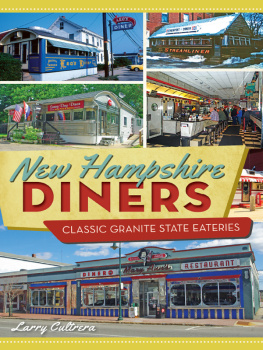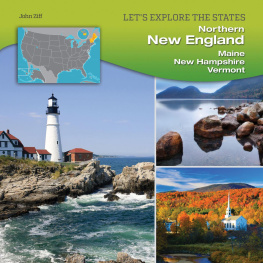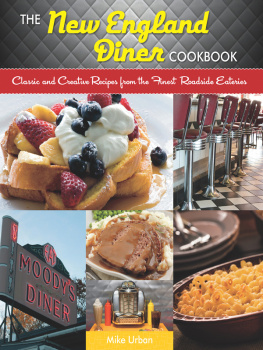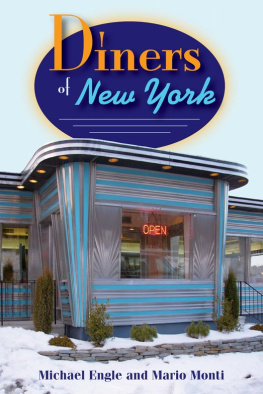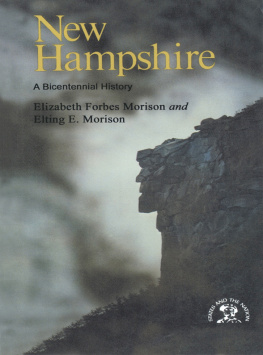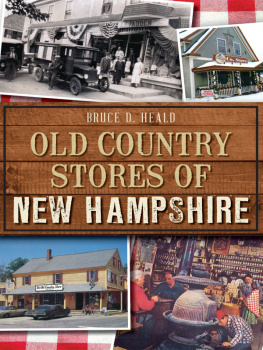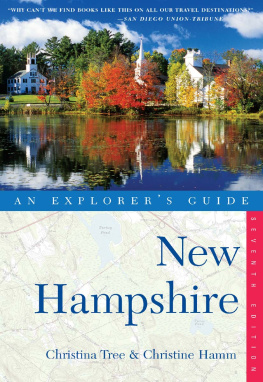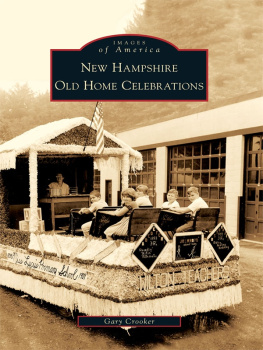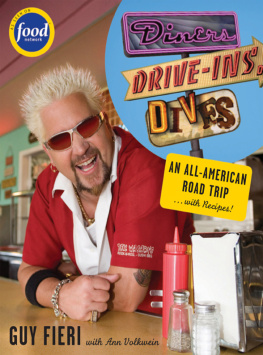
Published by American Palate
A Division of The History Press
Charleston, SC 29403
www.historypress.net
Copyright 2014 by Larry Cultrera
All rights reserved
First published 2014
e-book edition 2014
ISBN 978.1.62584.932.8
Library of Congress CIP data applied for.
print edition ISBN 978.1.62619.401.4
Notice: The information in this book is true and complete to the best of our knowledge. It is offered without guarantee on the part of the author or The History Press. The author and The History Press disclaim all liability in connection with the use of this book.
All rights reserved. No part of this book may be reproduced or transmitted in any form whatsoever without prior written permission from the publisher except in the case of brief quotations embodied in critical articles and reviews.
Contents
Foreword
In Larry Cultreras past life he was a diner. (Take your pick; Id say he might have been a diner similar to Caseys in Natick, Massachusetts). In his present life, hes a leading authority in the world of dinerdom with his power-packed, eventful and fully loaded blog, www.dinerhotline.com. In his future life, Larrys legacy will endure as a notorious diner archaeologist, historian and general-purposes storyteller in the tradition of Mark Twain. If he were a counterman, hed be presented with a James Beard award, several times over.
Larrys passion for diners and their history has no boundaries. His limitless, thirty-four-plus-year fascination with diner history has given him a reputation of bringing warm delight to anyone whos in his presence or who is lucky enough to share a meal with him at a favorite diner of hiseven not a favorite. And hell tell you why it isnt. Hes perfectly at ease with all the ins and outs of any diner, any period and any owners he knows well and not at all. His encyclopedic journeys are wonders to behold, full of color and flavor. The reader will soon join in on another adventure, chock-full of tales, visual delights and, above all, a symbiotic closeness rare in the annals of all the folks who share similar affection in the diner culture community.
JOHN BAEDER
Nashville, Tennessee
May 2014
Acknowledgements
Thanks as always to my wife, Denise, for putting up with me all these years. I know it has not been easy for her, having to live with this diner obsession. Thanks also to my colleague and friend Richard J.S. Gutman, the foremost authority on diner history, for all his help and encouragement throughout the last thirty-plus years. Dick also was kind enough to read through the manuscript as well as provide some photos included in this book. It was his initial and exhaustive research back in the early 1970s that created the basis of knowledge that helped fuel the interest people like me have for this subject. I cannot forget Steve Repucci, my longtime friend and road-trip companion, who helped to steer this fascination into a full-blown obsession. Another longtime friend and road-trip companion whom I met on the diner trail is David Hebb. I want to thank David for his contribution of the before photo of the Mt. Pisgah Diner when it was still at its first location in Gardner, Massachusetts. Special thanks to my good friend and kindred spirit John Baeder whose book Diners, filled with his wonderful paintings and sketches, was a total inspiration to me and how I approach documenting diners with my own photos. I am grateful for his taking the time to write the foreword for this book. I also want to give a shout-out to my friends and fellow History Press authors Michael Gabriele and Garrison Leykam for all their encouragement, as well as including me in their respective books The History of Diners in New Jersey and Classic Diners of Connecticut.
Other people who have assisted me with information and who have been longtime colleagues are Colin Strayer, Randy Garbin, Steve Harwin, Gary Thomas and Michael Engle. Thanks also to Jonathan Yonan for the last-minute replacement interior photo of Gilleys P.M. Lunch. In addition, there were quite a few diner owners and former owners as well as other people who have been extremely helpful during my research for this book. Among these people, I am extremely grateful to Debbie Burnham, library technician at the Laconia Public Library; Sharon M. Jensen, DPW executive secretary for the Town of Derry; Dave Pierce, the popcorn stand manager for Goffstown Lions Club; and David Palance and Polly Cote, president and historian, respectively, at the Milford Historical Society. I am extremely grateful to Mike Barrett, Mary Caron and the current owners John and Nick Grimanis for information on the Hillsborough Diner. Thanks also to the Grimanis family for allowing Gilman Shattuck, curator of the Manahan-Phelps-McCulloch Photographic Collection at the Hillsborough Historical Society, and Beatrice Jillette to create a digital reproduction from the rather large framed photo of Zekes Diner to be used in this edition. Thanks, Gil and Bea!
Thanks to Roger Rist of Georges Diner (a very congenial host for sure); Will Scopa of the Silver Lake Railroad; Chris and Patti Williford of the Littleton Diner; Holly Burnham, Leann Briggs and Steve Shorey of the Four Aces Diner; Alex Ray of the Common Man family of restaurants; Roger Elkus and Daryl McGann of Rogers Redliner Diner; Carol Lawrence of the Red Arrow Diners; Karen Lewis, manager at Mary Anns Diner (Derry); Bruce Balch and Loucas Tserkezis of the Sunny Day Diner; Cindy Spain as well as Jerry and Tina Nialetz of the Bristol Diner; Debbie Carter of Daddypops Tumble Inn Diner; Rose Pucci, Bonnie Noyes and Katherine Blackey Clark of the Union Diner; and Dori Dearborn of Main Street Station Diner for their help providing information on their respective diners. Thanks also to Kenneth Osgood Jr. (Spider Osgoods son) and Gary Anderson of New Hampshire Movies Inc. for insights on Spider Osgood, the legendary short-order cook. I also want to thank Katie Orlando and the crew at The History Press for all their help and guidance throughout this project. Finally, thanks to all the New Hampshire diner owners not named here who took time out of their schedules to speak with me, however briefly, during the course of their busy days. I salute all of you and only wish you a prosperous future in all your endeavors, serving good food and congeniality to appreciative customers like me.
Introduction
New Hampshire Diners: Classic Granite State Eateries will appeal to history buffs, diner aficionados and foodies, as well as the casual road-tripper. This book will introduce the reader to some of the classic diners currently operating in the Granite State as well as be a brief primer of the history of this uniquely American institution. The history of diners in New Hampshire is similar to that of the other New England states. Diners began, basically, with the introduction of horse-drawn lunch wagons that were initially produced in Worcester, Massachusetts, from the late 1870s into the early 1900s. The companies that produced these wagons were started by men such as Samuel Messer Jones, Charles Palmer and Thomas H. Buckley and were eventually superseded by companies such as the Worcester Lunch Car Company of Worcester and J.B. Judkins Company of Merrimac, Massachusetts, among smaller local concerns. Enterprising men who saw the appeal of operating their own businesses bought these lunch wagons and provided food to customers who were out and about, usually at night after other brick-and-mortar food establishments had closed for the day. Some of the food in the earlier wagons was premade while the later wagons had minimal cooking facilities to provide the patron with hot dogs, hamburgers, various other sandwiches and coffee. Many of these wagons were strategically located in downtown business areas, either near the town common or other high-traffic areas adjacent to mills, factories, theaters and other entertainment or civic venues. As time went on and the industry changed, the larger diners started supplanting the more mobile lunch wagons coming into the Granite State. They were usually located along the main roads between towns and cities as well as in busy downtown areas. By the 1950s, the manufacturing center for diners had already migrated from New England into the Mid-Atlantic states of New York and New Jersey, where there were many more companies that built diners. Inevitably products from some of those companies made it into northern New England as well, joining the many New Englandbuilt diners already in the state (and, in some cases, replacing older diners).
Next page
